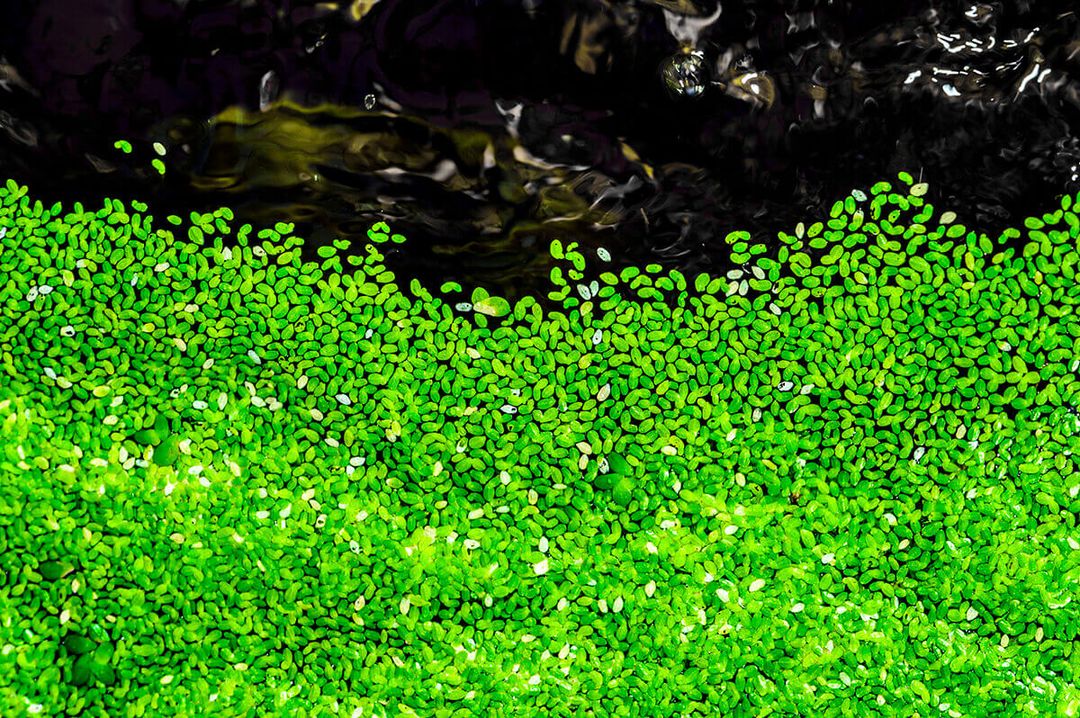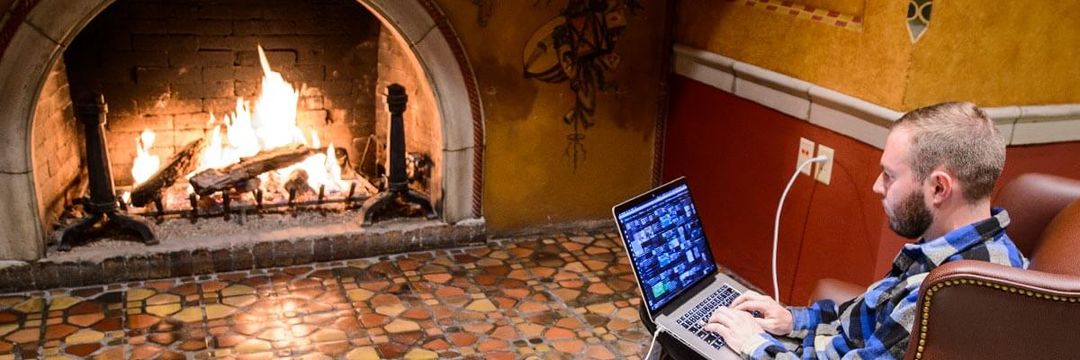This article was originally published in the August, 2014 issue of the Badger Insider
To the casual observer, Curtis Prairie is a peaceful place. The central (and original) land tract at the UW Arboretum is a seventy-three-acre oasis for tall grasses and the wildflowers tucked among them — species that have been growing on Wisconsin prairies since the Ice Age.
Yet the chirping birds and sweeping grasses conceal a warzone. For more than a century, native plants have been under siege, and sometimes the best, and only, way to protect these ancient inhabitants from their creeping enemies is to burn them all.
This year marks the UW Arboretum’s eightieth anniversary.
One of the lasting scientific contributions from the country’s first restored prairie is a series of experiments showing that controlled burning is absolutely essential for helping native plant life to survive.
“We only have one-tenth of 1 percent of native prairie left in Wisconsin,” says Arboretum ecologist Brad Herrick. “It’s a vital resource that is very rare, and people are understanding more and more that once these communities are gone, they’re gone forever.”
Though modern Arboretum land managers and volunteers know much more than their predecessors about how to use fire for conservation, they also face an increasing number of man-made barriers to burning — and native species could end up in the crossfire.
An ecosystem in ashes
Arboretum researchers believe that certain natural processes are as much a part of the prairie ecosystem as are plants and animals. Fire is one of the most fundamental of these processes, and many prairie species have evolved to thrive in an environment that regularly experiences large, intense wildfires.
However, even though prairie plants can do things like grow fire-resistant bark or germinate in scorched soil, they were unable to cope with the rapid landscape changes wrought by agriculture. By the early 1930s, the land that is now Curtis Prairie was an abandoned farm overrun by Kentucky bluegrass, an invasive, non-native plant used for livestock grazing and often found in lawn and turf mixes. The bluegrass roots had turned the soil into a dense sod that had all but choked out the native plants.
When the UW acquired the field in 1934 to establish the Arboretum, no one — not even founding director and famed conservationist Aldo Leopold — quite knew what to do with it. Over the course of the next decade, Arboretum leaders began to transplant native sod from other Midwest prairie remnants and to dabble with controlled-burning techniques. Prior to European settlement, American Indians had regularly burned prairie in the area, and conservationists suspected that native plants just needed a little room to “breathe” and bounce back.
In 1948, plant ecology professor John T. Curtis, the prairie’s eventual namesake, and Max Partch PhD’49 published the first scientific paper to directly attribute a reduction in an invasive-species population to controlled burning. In this case, the researchers were able to significantly decrease the abundance of Kentucky bluegrass, which allowed native species to better compete and even take hold in certain areas of Curtis Prairie. After the paper, fire became a core tool for generations of Arboretum researchers and land-care managers. They burned the prairie regularly at the beginning of each spring and later carried the practice to additional land acquisitions.
“A lot of what’s known about fire started here,” says Herrick. “Anyone who utilizes burning in their management has been indirectly impacted by the studies that happened here. Even if they don’t know the research was done [at the UW], they’re benefiting.”
Burn practices remained fairly unchanged until the 1980s, when a new invader swept into Curtis Prairie. White sweet clover, a biennial legume, was proliferating, and it had fire to thank in part for its success: early spring burns always missed the clover blooms.
Botany professor and long-time conservation advocate Virginia Kline ’47, MS’75, PhD’76 decided it was time to mix things up. She found that alternating the schedule to burn in early spring one year and in late spring the next made a major dent in the abundance of sweet clover. In the first year, the fire stimulated germination, depleting the seed bank in the soil. In the second year, the fire killed off the flowering plants before they could seed again.
“If you burn the same way over and over, decade after decade, a fire will start to help certain plants and harm certain plants,” says Michael Hansen, the Arboretum land manager who heads the fire crew and oversees every burn. “If you mix it up, then your actions are having a more diverse effect. You’ll favor and harm a different suite of species.”

No job for blue jeans
For Hansen, a successful fire is, quite simply, a safe fire — a concept that has evolved gradually at the Arboretum.
“In the early pictures, the people doing fires were usually university researchers, wearing what they wore to teach class, or women in dresses,” he says. “Even more recently, maybe from the ’70s, ’80s, or early ’90s, you would see them wearing flannel shirts and blue jeans. No gloves, no helmet. You would never see that today.”
Today’s fire crew is composed of approximately eight Arboretum staff and select volunteers who have completed entry-level firefighting training. They wear special outfits, complete with fire-retardant pants and shirts, eye equipment, and gloves.
The general burn seasons run from late fall until it snows and again in spring, usually from April to May. The crew tries to get in as many burns as possible, but some seasons, such as the overly wet spring of 2013, conditions never allowed for even a single fire.
Hansen and his colleagues write up burn plans months in advance with clearly outlined objectives for each fire. Then they wait for the weather to cooperate. If a good forecast holds true on the morning of a scheduled burn, Hansen will go through a checklist and make sure firebreaks are in place. These are either natural features, such as water courses, or man-made elements, such as roads or strips of razed land.
The team will then test a small portion of land to make sure the fire behaves as expected. If the flames are bigger than the crew anticipates or the wind shifts, they must reschedule. But if the test goes as planned, the team will split into two groups of three or four. They’ll light the fire downwind and move it slowly into the wind, with each group moving in opposite directions around the burn land.
Every member of the crew carries a backpack filled with water that is sprayed to guide the fire along its intended path. By the time the fire makes it to the opposite side of the land unit, it’s typically small enough to be put out simply by stepping on it.
Flames against a flood
Hansen bears the responsibility of keeping a long-time Arboretum practice alive, but unpredictable weather isn’t his only obstacle — there’s also bureaucracy.
“I got into this line of work to protect the plants and animals that need land set aside and actively managed to protect them,” Hansen says. “I know fire is only going to get harder to use as a tool to restore land. I realize I have to do a good job, do it safely, and be an advocate so that [fire] can continue to be used.”
Curtis Prairie is surrounded on all sides by signs of urban life, as its borders are close to hospitals, schools, public parks, and several homes. The Beltline, a major highway, slices through its middle. This tricky location means that Hansen has to look at a complex menu of factors before even scheduling a burn.
Each year the Arboretum receives a permit from the city, which specifies a narrow range of temperatures, humidity levels, wind speeds, and wind directions during which a burn can take place. For instance, Hansen’s team can’t burn with any sort of north wind, which would drive smoke in the direction of the thousands of cars on the Beltline.
In addition to the rules, urban structures also complicate burn practices. Three storm sewers from Madison-area suburbs drain into Curtis Prairie, carrying in outside soils and excess nutrients. Further, runoff keeps the ground wetter than it would be naturally. In fact, some acres in the nearby, smaller Greene Prairie are now so saturated that wetland vegetation is taking hold, and it’s begun spreading to Curtis Prairie.
Reed canary grass is a particularly aggressive species. It seems to benefit from the open spaces created by fire, so land managers have had to turn to other strategies to control it, with limited success.
But Hansen, Herrick, and their colleagues are far from surrender in their ongoing war against native and non-native invasives. They are currently exploring plans to try burning during the summer months. Though the logistical challenges of burning during the hottest time of the year are substantial, they anticipate that burning during growing season could kill off significant numbers of invaders.

A canary with petals
One of the Arboretum’s core goals is to maintain species diversity and, where possible, to expand it. But for Herrick, biodiversity is more than a research agenda. It’s an ethical imperative.
“I think we have a moral obligation on some level,” he says. “Who are we to do things that would make or allow these plants to go extinct? We don’t fully understand what we have yet [to know] what we are losing.”
Preserving the right balance of species is an ongoing challenge for Arboretum staff, but the presence of a particular — and very popular — plant family indicates that their efforts are making a difference.
In 1938 the Wisconsin State Journal published a scathing letter by Leopold addressed to an anonymous wildflower enthusiast who appeared to have dug up the Arboretum’s last remaining yellow lady’s-slipper orchid.
“The University of Wisconsin has got the notion, perhaps a foolish one, that the privilege of seeing a ladyslipper [sic] in the woods has got something to do with education,” Leopold wrote. “For this reason, it is acquiring an arboretum ... Perhaps, after all, our students would learn a lot if we took them out there and said: ‘Here is where we used to have a ladyslipper.’ ”
The Arboretum’s orchids continue to evoke strong public interest — and the protective instincts of its scientists.
Several small orchid populations can be found on Arboretum lands. However, to prevent wildlife vandalism, staff members are careful not to publicize their exact locations. The definitive guidebook to plant life in the Arboretum, Prairie Plants of the University of Wisconsin Arboretum, lists six orchid species as being present, including the eastern prairie fringed orchid, a flower as fragile as the snowflakes its flared, white petals resemble. The orchid was once a common sight on Midwest prairies but is now on the federal threatened-species list. In 2005, only a single specimen was found in the Arboretum’s Greene Prairie.
Wisconsin is home to almost fifty orchid species. That may seem like a lot, but orchidaceae is actually one of the largest plant families in the world, with around 25,000 species. The incredible diversity of orchidaceae has inspired generations of researchers interested in plant diversity, from Charles Darwin to Ken Cameron, a botany professor who directs the Wisconsin State Herbarium and runs a lab at the UW that is dedicated to orchid biology.
In a recent survey of orchid populations across Wisconsin, Cameron and his graduate students found that Dane County is home to around thirty species, making it the fifth most diverse county in the state. He says preserved land areas serve as refuges for the flowers.
“There is just so little native prairie left in North America that these orchids are barely hanging on,” Cameron says. “We’re fortunate that in Dane County, we have quite a lot of protected land [managed by the Arboretum] that gives more places for these orchids to grow.”
Native orchids are a finicky bunch overall. They are dependent on fungi in the ground to help them obtain nutrition from the poor soils they typically inhabit. That’s partly why digging up and transplanting orchids often dooms them; they can’t survive for long without the fungi nearby. In general, prairie orchids aren’t as showy as the tropical varieties depicted in movies and books. Unlike those tree-dwelling cousins, Wisconsin orchids grow on the ground, and fire is an important element for encouraging their growth. Many species are short but need direct sunlight, so they benefit from periodic burns that clear off surrounding, taller plant life.
Because they are so delicate, the presence of orchids at all is taken as a sign of a balanced ecosystem. Cameron says that these flowers often serve as “the canary in the coal mine” in terms of gauging the health of their environment.
“Orchids tie together this web of life,” he says. “They need fungi, insects and other plants around them to create an ecosystem. Break that web and it collapses — it can’t survive. We can’t protect the species without protecting the whole ecosystem.”









